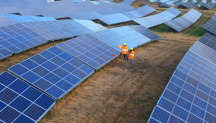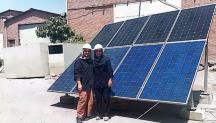

-
-
Gielen, D. (2021), Critical minerals for the energy transition, International Renewable Energy Agency, Abu Dhabi.
Copied
Critical Materials For The Energy Transition
This paper will assess how the growth of renewables will put critical materials at the centre of the energy transformation, with the objective of highlighting the criticalities related to the sector and of identifying how technological developments and innovation can positively reduce geopolitical risks.
Newsletter
Key Facts
Critical materials have become a focus for the energy transition and governments have a role to foster long-term solutions. The use of critical materials should be considered early on and governments should plan ahead to avoid potential delays to energy transition due to critical materials shortfalls and also avoid emerging geopolitical challenges related to critical materials supply as well as price increases caused by scarcity. However, a number of strategies can be deployed to avoid major supply challenges in the period leading up to 2050. These strategies include increased extraction, product design to avoid or minimise critical materials use, and recycling of products to recover scarce materials. Recent trends suggest that, for example, battery producers are already reducing their exposure to critical materials supply risks.
This technical paper assesses how the growth of renewables will put critical materials at the centre of the energy transformation. The critical materials and their supply situation and outlook are discussed, with a focus on copper and neodymium. Technological developments and innovation in product design are considered and how these can mitigate potential geopolitical risks and thus further strengthen the robustness of the energy transition. Special attention is given to batteries, renewable power generation technologies, and electricity grids.
This technical paper assesses how the growth of renewables will put critical materials at the centre of the energy transformation. The critical materials and their supply situation and outlook are discussed, with a focus on copper and neodymium. Technological developments and innovation in product design are considered and how these can mitigate potential geopolitical risks and thus further strengthen the robustness of the energy transition. Special attention is given to batteries, renewable power generation technologies, and electricity grids.




